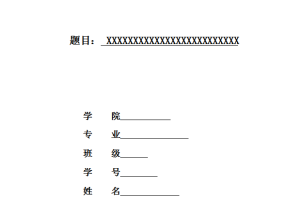Abstract
The relationship between language and gender has long attracted the western sociolinguists’ interest. As early as in the 1960s, with the development of feminist social movement and the growth of sociolinguistics, there are many researches on inter-gender discourse. But how to explain speech differences between men and women remains a question in dispute among sociolinguists.
The article reviews the definition of discourse and the definition and historical perspective of gender discourse. Five differences in conversations are displayed. They are the usage of “directness and indirectness”, “minimal responses”, “questions”, “swearing and taboo language, hedges, compliments and politeness” and “amount of talk”. The paper then analyzes the main causes of inter-gender differences, including ideology, socialization, interpretive frames and social status and power.
Based on the analysis and discussions above, the author offers some advice to avoid the miscommunication: pay more attention and respect to the objective factors, gain share knowledge as much as possible and learn to be open and flexible.
In fact, the study on gender discourse is still very new. Most of the available analysis is based on the patterns of discourse within American society. And it is very important to notice the inter-gender differences in western countries, and do further study on other inter-gender differences in other countries.
Key words: gender discourse gender differences conversational style
摘 要
语言与性别问题一直都受到社会语言学家的重视。早在20世纪60年代,随着西方妇女运动的蓬勃发展与社会语言学的兴起和壮大,涌现了大量相关的研究。另外,如何解释男女交际中存在的差异仍然是一个引起语言学家争论的话题。
文章回顾了话语的定义以及性别话语的定义和历史发展状况;展现了对话中的五种差异形式–直接和间接的使用、最低限度应答语的使用、疑问句的使用、话语中诅咒语、禁忌语、闪避词、恭维语和礼貌用语的运用以及话语量;分析探讨了话语中性别交际产生差异的原因–意识形态、社会化适应、诠释框架以及社会地位和权力。
在此基础上作者归纳出避免差异产生的建议和方法:只有认识到性别语言差异客观存在的事实,尊重其各自发展的规律;在日常生活中获取大量的共享知识,培养开放灵敏的思维,才能克服差异所带来的失误,达到有效交际的目的。
作为话语研究的一个课题,对性别话语的研究还相对比较新。现有的大多数分析资料都是基于美国社会内部的话语模式。因此我们应在此基础上进一步深刻认识西方文化中性别交际差异,借此寻求探究世界各国性别差异的科学方法和新视角。
关键词:性别话语 性别差异 话语风格
Inter-gender Differences in English Conversation Style
(外语系 江秋菊 指导教师 张碧)
2.1 The definition of discourse. 4
2.2 The definition of gender discourse. 5
2.3 Gender discourse studies in historical perspective. 5
3.Inter-gender differences in conversations. 6
3.1 Directness and indirectness. 6
3.5 Swearing & taboo language, hedges, compliments and politeness. 10
4.3.1 Intimacy—independence. 14
4.3.2 Inclusion and exclusion. 15
4.3.3 Relationship—information. 16
4.4 Social status and power 17
5.1 Increase shared knowledge. 18
5.2 Learn to be open and flexible. 19





